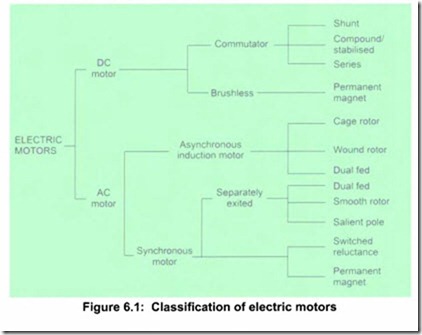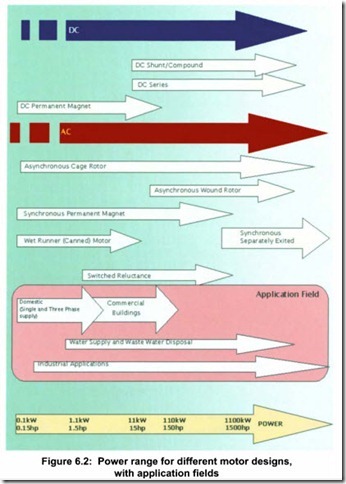Types of electric motors
Whilst there are many types of pump prime movers available, such as diesel engines and steam turbines, the majority of pumps are driven by electric motors.
Electric motors have evolved over the last 150 years, and the most common constructions are detailed in the following pages, and in Figure 6.1.
Although this document is principally about pumps and variable speed drives it is important to appreciate that, on a typical industrial site, motor driven equipment accounts for approximately two thirds of electricity consumption and any improvements in motor efficiency can offer major energy savings. Many of the principles outlined will apply to all motors on a given site, not just those used as pump drivers whose application is shown in Figure 6.2.
The type of motor selected for a particular task will vary with the speed, power and supply available, whereas the construction of the motor will vary with the environment of the installation and the cooling medium available.

